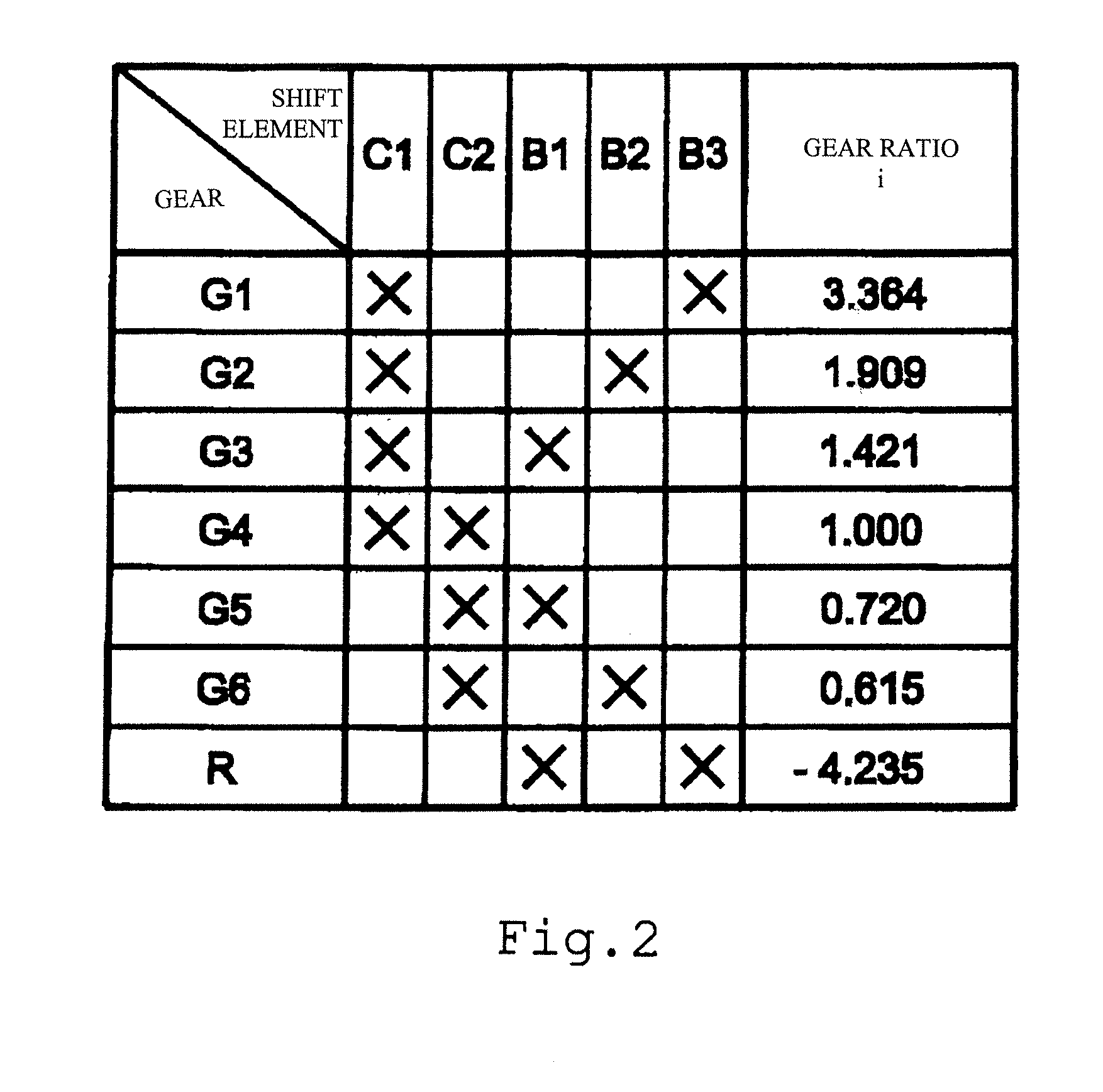Hybrid drive train of a motor vehicle
- Summary
- Abstract
- Description
- Claims
- Application Information
AI Technical Summary
Benefits of technology
Problems solved by technology
Method used
Image
Examples
first embodiment
[0056]In the hybrid drive train according to the present invention, shown in FIG. 1, upstream from the automatic transmission 1, which is the same as that of FIG. 6, there is connected, instead of the hybrid torque converter 20, a hybrid module 30 with an input element 31 and an output element 32. The hybrid module 30 comprises an electric machine EM that can be operated as a motor and as a generator, and a controllable separator clutch K1, i.e. one that can be engaged and disengaged automatically, for coupling the internal combustion engine when necessary. The electric machine EM is formed as an internal-rotor machine with a radially outer stator 34 fixed to a module housing 33 and a rotor 35 arranged radially inside the stator 34. In contrast to the known hybrid drive train of FIG. 7, however, the rotor 35 is now in driving connection with the output element 32 via an input transmission stage 36.
[0057]The input transmission stage 36 is designed as a simple planetary gearset and is...
second embodiment
[0060]In a first variant of the hybrid drive train according to the invention shown in FIG. 3, as an advantageous further development of the hybrid drive train according to the invention shown in FIG. 1 a second, additional controllable separator clutch K2 is present, by means of which the driveshaft of the internal combustion engine can be connected to the ring gear 40 of the input transmission stage 36.
[0061]The two separator clutches K1, K2 are both in the form of disk clutches, respectively with an inner disk carrier 41, 43 and an outer disk carrier 42, 44, and are arranged axially next to one another radially inside the rotor 35 of the electric machine. The inner disk carriers 41, 43 of the two separator clutches K1, K2 are connected with one another and to the input element 31 of the hybrid module 30′. The outer disk carrier 42 of the first separator clutch K1 is connected in a rotationally fixed manner to the planetary carrier 39 that forms the output element of the input tra...
PUM
 Login to View More
Login to View More Abstract
Description
Claims
Application Information
 Login to View More
Login to View More - R&D
- Intellectual Property
- Life Sciences
- Materials
- Tech Scout
- Unparalleled Data Quality
- Higher Quality Content
- 60% Fewer Hallucinations
Browse by: Latest US Patents, China's latest patents, Technical Efficacy Thesaurus, Application Domain, Technology Topic, Popular Technical Reports.
© 2025 PatSnap. All rights reserved.Legal|Privacy policy|Modern Slavery Act Transparency Statement|Sitemap|About US| Contact US: help@patsnap.com



